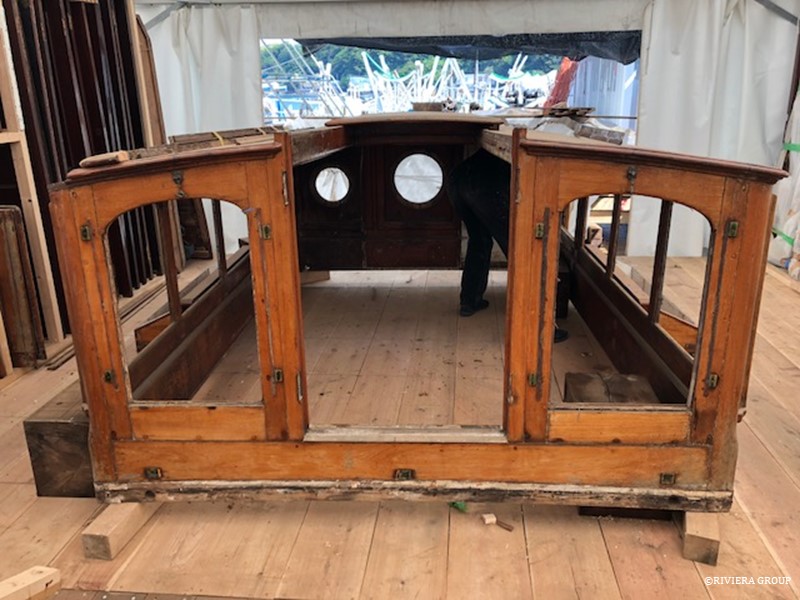May 13 to 19
English shipwright Jonathan Alcock started this week and got to work on restoring the main deck house. He is a talented designer, a great asset for a joiner.

The skylights on the side of the deck house were not original and were probably added in the 1950s. Their removal was the first step of the restoration.

Ben adds the last laminates to the stem section.
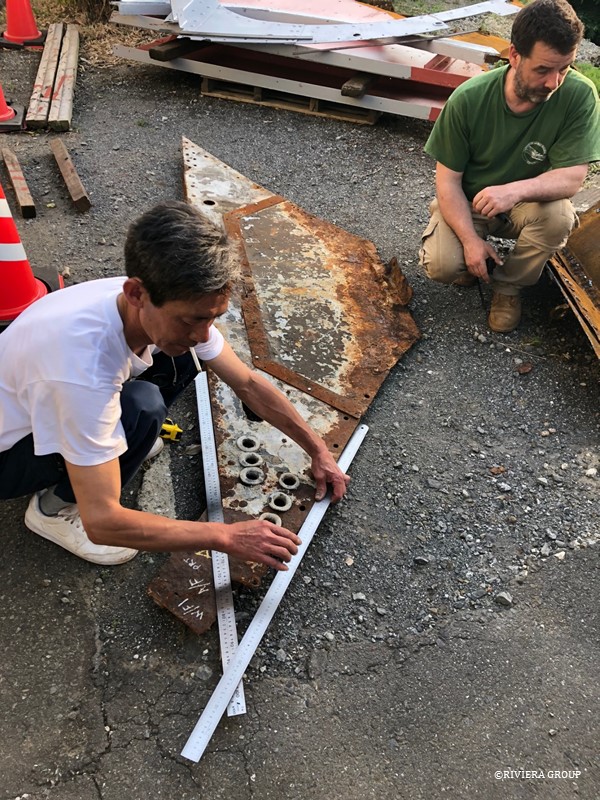
The web frames came in sections and the lower section in the bilge needed some remedial work. Sawamura and Paul (above) discuss the options, before deciding to replace this piece entirely.
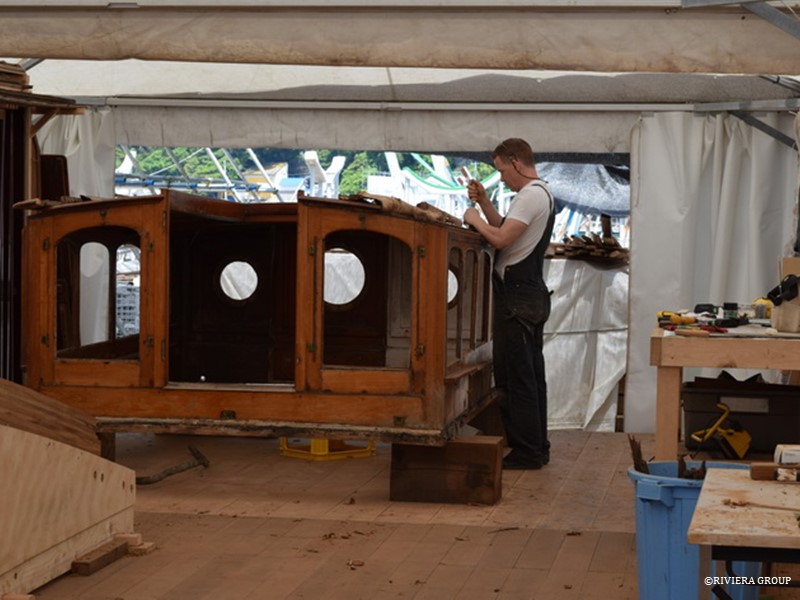
The word in the workshop is that Jon (above) has the best job, as he doesn’t have to clamber about on scaffolding. Restoring the deckhouse is satisfying, but far from easy, however. It’s delicate work and the joinery must be accurate. The house was originally built without any glue and is only held with tenons and pegs. This made it strong, flexible, and restorable. If the joints had been glued, dismantling would have been impossible and much would have been lost.

The forward panel of the main deck house had portholes. These always looked out of place, and we soon discovered that they were added at some point. It would take some detective work to find the original arrangement.
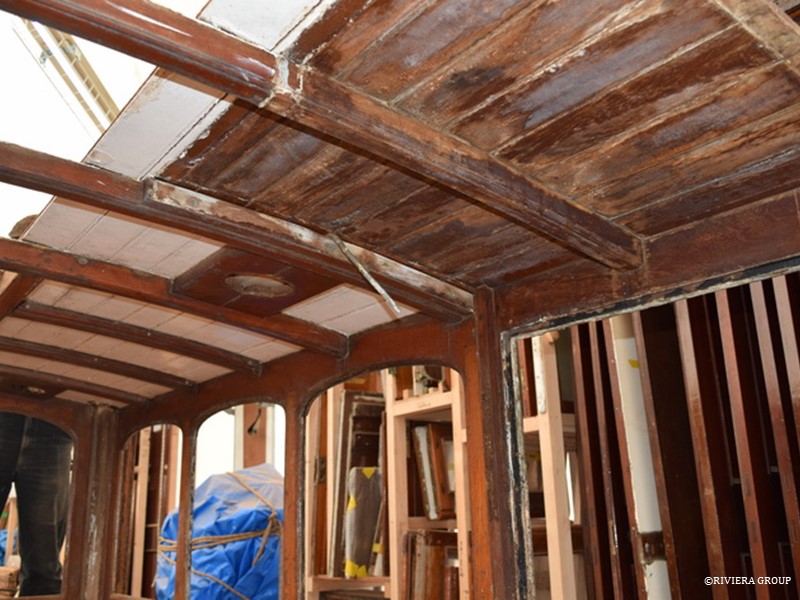
The interior of the deck house roof was painted white and looked very tatty. Exploratory cleaning resulted in an exciting discovery: some very fine teak under the paint. Care was taken to remove the planking for stripping, cleaning and re-using.
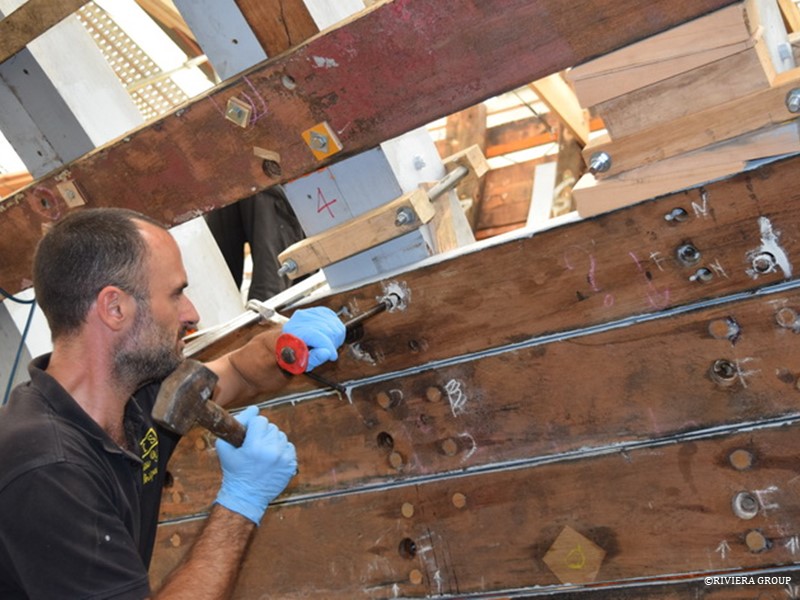
Richard punches a fastener home (above). The heads of the bronze fasteners are given a couple wraps of oakum (below) and bedded in white lead when they are driven home.


